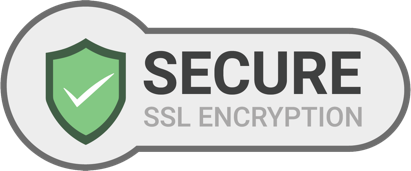Information about Nasacort (Triamcinolone)
Nasacort is a brand name for triamcinolone acetonide, a corticosteroid used primarily in the treatment of allergic rhinitis (hay fever) and other conditions related to inflammation. Nasacort is a nasal spray that works by reducing inflammation in the nasal passages, helping to relieve symptoms such as nasal congestion, sneezing, runny nose, and itching caused by allergies. It is available over-the-counter (OTC) in many regions, making it accessible for managing allergy symptoms without a prescription. As a corticosteroid, Nasacort works by inhibiting the release of pro-inflammatory substances, thus controlling the immune response that leads to allergy symptoms.
Product Highlights
- Nasacort is primarily indicated for the treatment of symptoms of seasonal and perennial allergic rhinitis, including sneezing, nasal congestion, runny nose, and itchy nose. It helps reduce inflammation in the nasal passages triggered by allergens such as pollen, dust mites, mold, and pet dander.
- Nasacort may also be used to treat non-allergic rhinitis (vasomotor rhinitis), which causes similar symptoms but without an identifiable allergic trigger.
- It is helpful for reducing nasal inflammation associated with various other conditions, including sinusitis and nasal polyps (in some cases).
- Nasacort can be used to prevent symptoms of allergic rhinitis from worsening, especially during allergy seasons when exposure to allergens is likely to increase.
Key Ingredient
Key Benefits
- Nasacort provides effective relief from the common symptoms of allergic rhinitis, such as nasal congestion, sneezing, itching, and runny nose.
- When used regularly, Nasacort offers up to 24 hours of symptom relief from seasonal and perennial allergies.
- Since Nasacort is delivered directly to the nasal passages, it works locally where the symptoms occur, reducing the risk of systemic side effects often seen with oral corticosteroids.
- By inhibiting the release of pro-inflammatory substances, Nasacort helps to reduce nasal swelling, which can make breathing easier and improve overall comfort.
- Available over-the-counter (OTC), Nasacort provides an easy-to-use, affordable option for managing allergies without the need for a prescription.
Direction of Use
- For adults and children 12 years and older, the recommended dose is usually 1 to 2 sprays per nostril once daily. The usual starting dose is 2 sprays per nostril (increased to 200 mcg per day), but it may be reduced to 1 spray per nostril once symptoms are controlled.
- For children 2 to 11 years old, the typical dose is 1 spray per nostril once daily (50 mcg per nostril).
- Shake the bottle well before each use. Gently blow your nose to clear the nasal passages before using Nasacort. Insert the spray nozzle into your nostril, tilt your head slightly forward, and spray while breathing in gently through your nose. Avoid spraying into your eyes or mouth.
- If you miss a dose, take it as soon as you can, unless it’s nearly time for your next dose. In that case, skip the missed dose and do not take two doses at the same time.
Safety Concerns
- Common side effects include nasal irritation, burning, stinging, or dryness in the nasal passages. These side effects are typically mild and usually resolve with ongoing use.
- Prolonged use of nasal sprays can cause nosebleeds, especially if used incorrectly or over long periods.
- Like other corticosteroids, Nasacort can suppress the immune response, potentially increasing the risk of fungal or bacterial infections in the nasal passages or sinuses.
- Prolonged use of nasal corticosteroids has been associated with an increased risk of glaucoma or cataracts, particularly in individuals who use the medication for long periods.
- While Nasacort is designed to act locally in the nasal passages, long-term use or high doses can lead to some systemic side effects, including suppression of adrenal function.
- There is some evidence suggesting that long-term use of nasal corticosteroids in children may slightly reduce growth rates. Regular monitoring by a healthcare provider is recommended for children using nasal steroids long-term.
- Triamcinolone may interact with other medications, including other corticosteroids, and immunosuppressive agents. Always inform your healthcare provider about other medications you're using.
Avoid Nasacort (Triamcinolone) If
- Avoid if you are allergic to triamcinolone acetonide or any of the inactive ingredients in Nasacort.
- Do not use Nasacort if you have a current infection of the nasal passages or sinuses, especially fungal, bacterial, or viral infections.
- If you have had recent nasal surgery or injury, consult your healthcare provider before using Nasacort, as it may delay healing or exacerbate irritation.
- Nasacort should be used during pregnancy only if clearly needed and under a healthcare provider's guidance. It is not known whether Nasacort passes into breast milk, so consult with a doctor before using it while breastfeeding.
- If you have untreated eye infections or conditions like glaucoma or cataracts, you should avoid Nasacort unless instructed otherwise by a healthcare provider.




